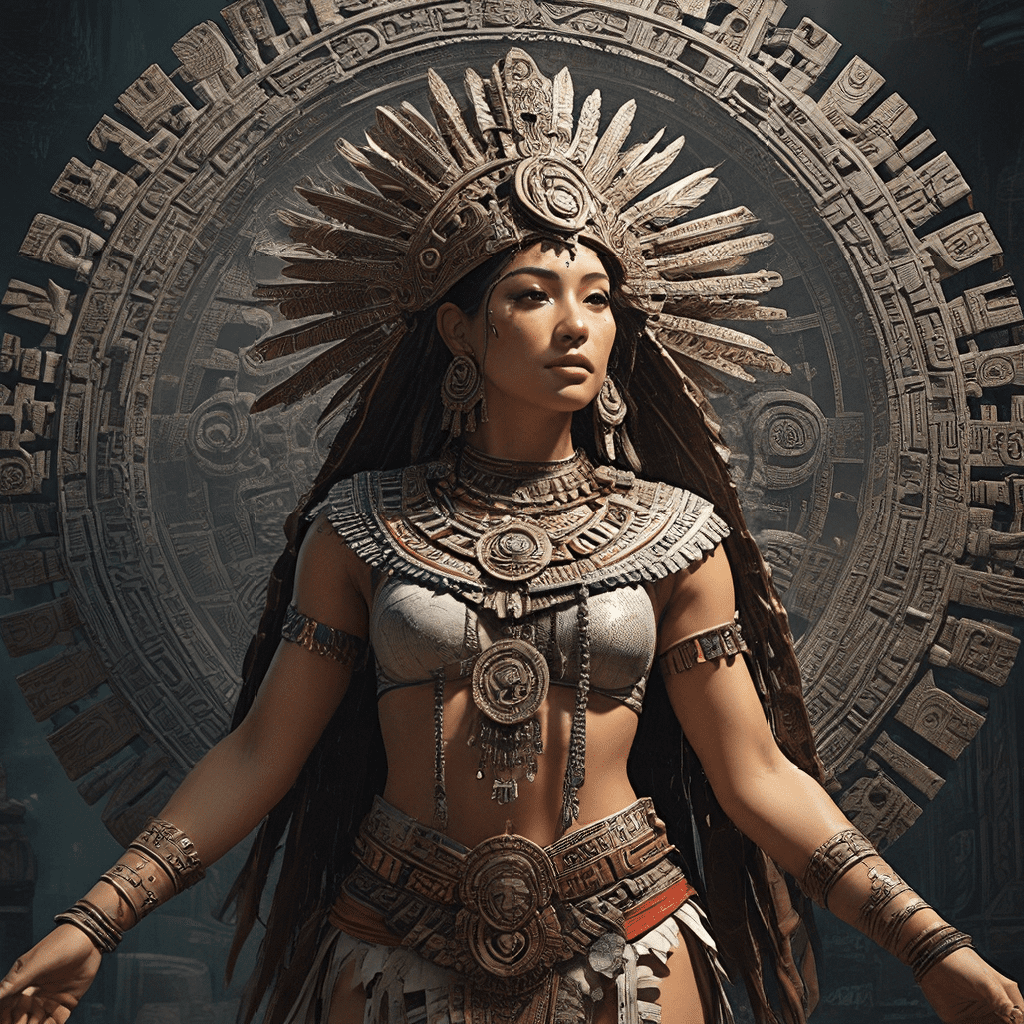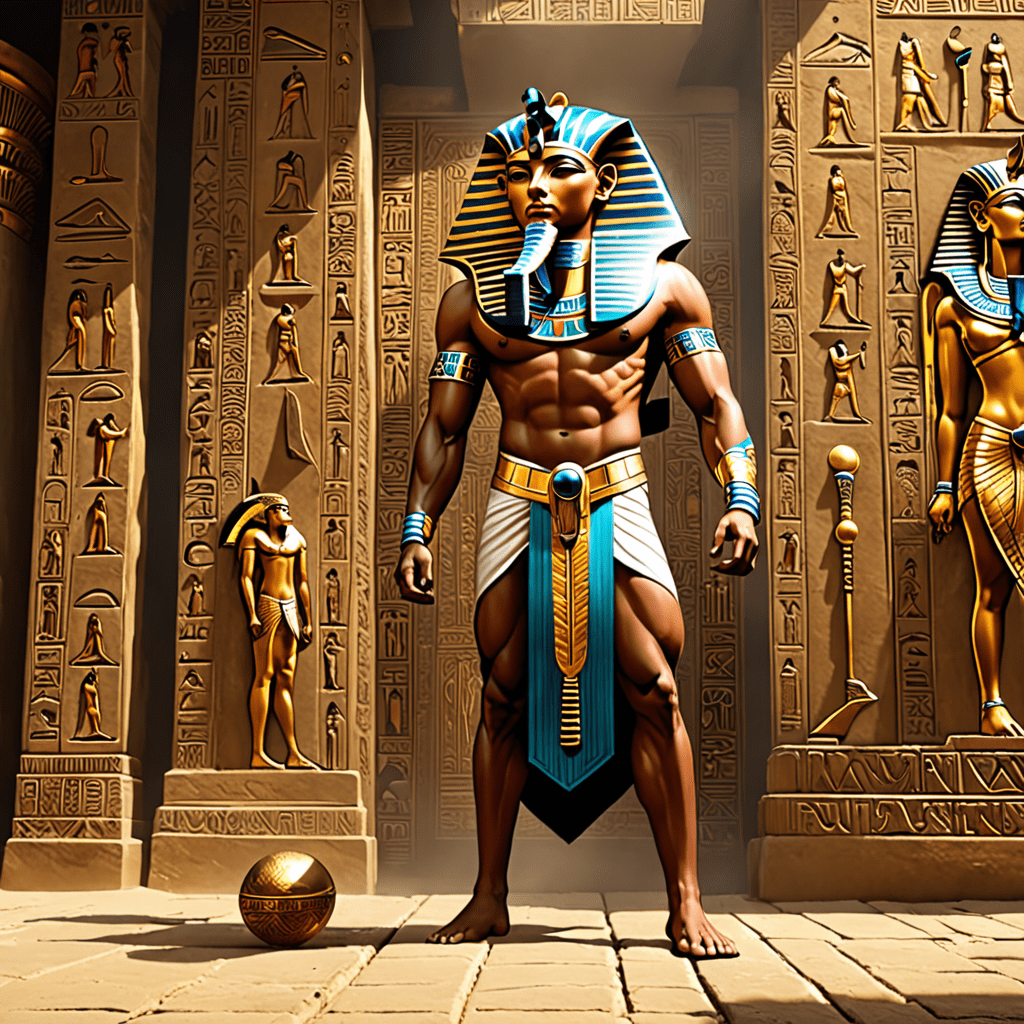The Myth of Coyolxauhqui: A Tale of Rebellion and Sacrifice
In the rich tapestry of Aztec mythology, the tale of Coyolxauhqui (pronounced Coy-yo-l-shaw-kwee) stands out as a compelling narrative of rebellion, sacrifice, and the eternal struggle between cosmic forces. Coyolxauhqui, the Moon Goddess, embodies both the power of the feminine and the consequences of defying the established order. Her story is a testament to the Aztec worldview, where the universe was a delicate balance of opposing forces, constantly vying for dominance. Understanding Coyolxauhqui's myth requires delving into the complex relationships between the celestial deities, the inherent dangers of challenging the divine, and the significance of sacrifice in maintaining cosmic harmony.
Coyolxauhqui: The Moon Goddess
Coyolxauhqui, a name that translates to "Golden Bells" or "She of the Golden Necklace," was a powerful lunar deity worshipped by the Aztecs. She personified the moon, representing its cycles of waxing and waning. As a celestial being, she held sway over the night sky, casting a silvery glow on the earth and influencing the ebb and flow of life. In Aztec beliefs, the moon was a feminine force, associated with fertility, creation, and the cycles of nature. Coyolxauhqui, as the embodiment of the moon, held a significant position in the Aztec pantheon. She was revered as a protector of women, childbirth, and the nocturnal realm. She was often depicted in art and iconography as a beautiful woman adorned with moon-shaped jewels, symbolizing her celestial power and her cosmic role.
The Origins of Coyolxauhqui: A Daughter of the Sun God
Coyolxauhqui's origins are steeped in the drama of the celestial realm. She was born from a union of the Sun God, Tonatiuh, and the lunar goddess Coatlicue. The story of Coatlicue, the "Skirt of Serpents," is often interweaved with Coyolxauhqui's myth, adding layers of complexity and intrigue. Coatlicue, a powerful earth goddess, was unexpectedly impregnated by a ball of feathers that fell from the sky, a symbolic representation of divine intervention. This divine seed gave birth to Coatlicue's four hundred children, the stars, as well as to Coyolxauhqui, the Moon Goddess.
The Legend of Coyolxauhqui’s Rebellion
The birth of Coyolxauhqui, however, was met with jealousy and resentment from her star siblings. They conspired to kill their mother, fueled by a desire for power and a thirst for vengeance. Hearing of their plan, Coatlicue pleaded with her unborn child, who was still in her womb, to protect her. The fetal deity, destined to become Huitzilopochtli, the god of war and the sun, responded to his mother's plea. He was born fully armed and ready for battle, a symbol of divine intervention and the strength of the warrior spirit.
The Battle of the Stars: Coyolxauhqui’s Defiance Against Huitzilopochtli
The moment Huitzilopochtli emerged from his mother's womb, the battle for supremacy began. Coyolxauhqui, the leader of the stars, rallied her brothers and sisters, leading a relentless assault against Huitzilopochtli. She armed herself with a magnificent war club, ready to defend her siblings and avenge their mother's death. The battle raged across the heavens, a clash of titans that shook the foundations of the cosmos. Coyolxauhqui's forces, fueled by hatred and a desire for vengeance, fought with ferocity, but Huitzilopochtli's divine strength and warrior prowess proved to be insurmountable.
The Triumph of Huitzilopochtli: Coyolxauhqui’s Demise
In the epic struggle between Coyolxauhqui and Huitzilopochtli, the battle raged on, a cosmic dance of light and shadow. Huitzilopochtli, wielding his obsidian spear, a symbol of his divine power, fought with a ferocity that shook the heavens. He unleashed a mighty blow, striking Coyolxauhqui down, her celestial form shattered into pieces, her rebellion extinguished. The myth of Coyolxauhqui's demise is a powerful testament to the consequences of defying the established order. It highlights the ultimate triumph of Huitzilopochtli, the sun god, and the importance of maintaining cosmic harmony. This battle also represented a symbolic victory over the forces of darkness and chaos, a victory that ensured the stability of the universe.
Coyolxauhqui in Aztec Art and Iconography
Coyolxauhqui's presence is felt throughout Aztec art and iconography, a testament to her enduring significance in Aztec culture. She is often depicted in sculptures, murals, and codices, her celestial form adorned with moon-shaped jewels, representing her divine nature and her power over the night sky. These representations often depict her in a fallen state, symbolizing her defeat at the hands of Huitzilopochtli, reminding the Aztecs of the consequences of defying the divine. In some depictions, Coyolxauhqui is shown as a severed head, a reminder of her sacrifice and the importance of order and cosmic balance. Her image serves as a visual reminder of the Aztec worldview, highlighting the interconnectedness of the celestial realm and the human world.
Interpretations of the Myth: Cosmic Order and Sacrifice
The myth of Coyolxauhqui is a complex and multi-layered narrative, offering insights into the Aztec worldview and their complex relationship with the cosmos. One interpretation of the myth emphasizes the importance of maintaining cosmic order. Coyolxauhqui's rebellion against Huitzilopochtli represents a disruption of the natural balance, a threat to the very fabric of the universe. Her defeat ensures the restoration of harmony and the continuation of life. Another interpretation of the myth focuses on the concept of sacrifice. Coyolxauhqui's death, while tragic, is a necessary sacrifice to ensure the stability of the universe and the continuation of life. Her sacrifice, like the rituals of human sacrifice practiced by the Aztecs, serves to appease the gods and maintain the delicate balance between the celestial and the earthly realms.
The Role of Gender in the Myth: Female Power and Submission
The myth of Coyolxauhqui is also a fascinating exploration of gender roles and power dynamics within Aztec society. Coyolxauhqui, as the Moon Goddess, embodies the feminine principle, representing the power and strength of women. However, her rebellion and subsequent defeat at the hands of Huitzilopochtli, a male deity, reinforce the patriarchal structure of Aztec society. Coyolxauhqui's story serves as a cautionary tale, reminding women of the consequences of defying the established order and the inherent power dynamics within the Aztec pantheon. Her myth highlights the challenges faced by women in a society where male dominance was deeply entrenched, even within the realm of the divine.
The Relevance of Coyolxauhqui in Contemporary Culture
Despite being a product of ancient Aztec culture, the myth of Coyolxauhqui continues to resonate with contemporary audiences, offering insights into human nature and the timeless struggle between order and chaos. The story of Coyolxauhqui's rebellion and her subsequent defeat speaks to our modern anxieties about power, control, and the consequences of defying authority. Her story, with its themes of sacrifice, cosmic balance, and the struggle for power, resonates with audiences who grapple with similar challenges in their own lives.
FAQ
Q: What is the significance of Coyolxauhqui's name?
A: Coyolxauhqui's name translates to "Golden Bells" or "She of the Golden Necklace," referencing the moon's radiant glow and her role as a celestial deity.
Q: What is the relationship between Coyolxauhqui and Huitzilopochtli?
A: Coyolxauhqui and Huitzilopochtli are siblings, born to the earth goddess Coatlicue. They represent opposing forces: Coyolxauhqui embodies the feminine power of the moon, while Huitzilopochtli represents the masculine strength of the sun and war.
Q: What is the symbol of Coyolxauhqui's power?
A: Coyolxauhqui is often depicted with a war club, symbolizing her strength and her role as the leader of the stars in their rebellion against Huitzilopochtli.
Q: What is the significance of Coyolxauhqui's defeat?
A: Coyolxauhqui's defeat reinforces the importance of maintaining cosmic balance and the consequences of defying the established order. Her sacrifice symbolizes the power of the divine and the need to respect the established hierarchy.



